December 13, 2013
Summary
It is likely that 2014 will be the year when the economy finally emerges from its slump. GDP growth should accelerate to 3.0% which would be a percentage point faster than in 2013. The expansion will no longer be confined largely to housing but become more broad-based as all sectors of the economy — consumers, businesses, foreign trade, and government — contribute to the growth pickup. Meanwhile, monetary policy will remain highly accommodative. Long-term interest rates may rise somewhat, but the key federal funds rate will remain at 0% through mid-2015. Against this background the stock market will continue to march upwards to even more lofty levels. The unemployment rate will fall to 6.5% by yearend as younger people and those who are currently working part time will find full time positions more plentiful. Given a very slow but steady increase in interest rates the expansion is likely to continue for another five years.
| GDP Forecasts — 2014 | |||
| 2012 | 2013 | 2014 | |
| GDP | 2.0% | 2.0% | 3.0% |
| Unemployment Rate | 7.8% | 7.1% | 6.5% |
| Inflation Rate | 1.9% | 1.8% | 1.9% |
| Fed Funds Rate | 0.1% | 0.1% | 0.1% |
| 10-year Note | 1.70% | 2.80% | 3.25% |
| 30-year Mortgage | 3.40% | 4.30% | 4.75% |
Consumer Spending
Consumers appear poised to spend at a somewhat faster pace in the coming year. The rapid advance of the stock market and double-digit increases in home prices are bolstering both consumer attitudes and their wallets as net worth has soared to a record high level.
At the same time consumers have paid down considerable amounts of debt in the past five years, and their debt burden is very low in relation to income. As a result, consumers have the ability to pick up their pace of spending if they so choose.
Some fear that the combination of rising mortgage rates and higher home prices might curtail growth of the rapidly expanding housing sector. Such fears seem overblown. While mortgage rates have recently climbed from 3.5% at midyear to 4.25%, those rates are the lowest since the 1960’s. And while home prices have risen 13% in the past year, they remain 23% below the peak level they attained in 2006.
Thus, housing remains affordable although less so than it was at the beginning of the year. The National Association of Realtors index on home affordability currently stands at 164 which means that consumers have 64% more income than is necessary to purchase a median-priced home.
Going forward demand will continue to outpace supply. The Census Bureau reports that 1.3 million new households are formed every year. Those families need a place to live. But builders are currently producing only 900 thousand new homes. They are being constrained by an inability to find adequate financing and/ or by a shortage of available skilled labor. The excess demand for housing should push prices higher in 2014.
While currently about 200 thousand jobs are produced every month, a larger-than-normal number of those jobs are low paying positions in the retail and food and beverage industries. Furthermore, many are part time positions. As a result, income is climbing at a modest 2.0% pace which limits the consumer’s ability to spend any more quickly.
As job gains continue to outpace growth in the labor force the unemployment rate will fall from its current level of 7.0% to 6.5% by the end of next year. With each passing month employers will increasingly have to rely on younger people to fill their hiring needs and they may choose to convert some of their part time positions to full time. That is good news for the 16-24 year old age bracket where the unemployment rate currently is 14.0%. Prior to the recession it was about 11.0%. A stronger labor market would also be a welcome development for those people who hold several part time positions even though they would like full time employment. Because of this continuing softness in the labor market the Federal Reserve will be justifiably slow in reversing the course of monetary policy.
As jobs growth accelerates and income rises more quickly, consumers are likely to step up their pace of spending.
Investment Spending
The economic outlook for corporate America also seems quite positive. With stock prices at a record high level firms are able to issue additional stock to bolster their capital base or offer an initial public offering at a favorable price. Corporate profits are at a record high level and growing at a healthy 5.6% pace. Corporate borrowing rates are slightly higher than they were at midyear, but for all practical purposes are the lowest they have been in 50 years which makes it an attractive time for firms to borrow. Meanwhile, banks are increasingly willing to make funds available to the corporate sector. Commercial and industrial loans are currently climbing at an 8.0% pace. Firms also have a record amount of cash on their books which they are anxious to deploy into higher-yielding assets. Despite this seemingly favorable environment for corporate America, non-residential investment spending has been expanding at only about a 3.0% pace.
This damper on investment spending is undoubtedly impacted by the political gridlock in Washington. Government spending is approved on a quarterly basis which makes it exceedingly difficult for government contractors to know what the future might bring. There is a constant threat of exceeding the debt limit which could cause the U.S. Treasury to default on its debt and result in sharply higher interest rates. The burden of compliance with existing legislation is onerous for small businesses. And the current disarray in the implementation of Obamacare makes it exceedingly difficult for firms to determine the cost of health care benefits for their workers. Under these conditions it is not surprising that many firms are reluctant to deploy their vast holdings of cash assets.
Having said that, a pickup in the pace of economic expansion next year, an increase in the debt limit for an extended period of time this coming January and adoption of a budget which will eliminate the possibility of another government shutdown should entice business owners to accelerate their pace of investment spending in 2014 to 6.8% from 3.0% in the current year.
Trade
The foreign trade sector of the economy should also contribute to GDP growth in this coming year for two different reasons. First, the deficit for net exports has been steadily shrinking for the past two years as the result of new technology in the oil sector. Hydraulic fracturing and horizontal drilling have unlocked supplies of natural gas and oil that were previously inaccessible. As a result oil and gas production has increased dramatically in recent years and will continue to climb for at least another decade. As a result, energy exports have been rising rapidly while energy imports are shrinking. By the end of this decade the U.S. is likely to be a net exporter of energy for the first time.
Second, growth overseas – Europe and Japan in particular — is expected to accelerate in 2014. Europe is expected to finally end its two-year recession and expand at a moderate pace this coming year. That turnaround is largely attributable to the European Central Bank’s pledge late last year to make funds available to any country that found itself in financial difficulty as long as that country was willing to commit to austerity measures that would reduce government spending. An upswing in Europe is important because the European Union as a block is as big as the United States.
Similarly, Japan’s economy has been in a growth recession for 20 years but it is likely to step up the pace in 2014. In this case the upswing is attributable to the Bank of Japan’s decision to pursue a quantitative easing strategy similar to what the Federal Reserve has been doing for the past five years. That has bolstered both consumer and business confidence and triggered an astonishing 65% increase in the Japanese stock market in the past twelve months. Faster economic expansion in Japan is important because it is the world’s third largest economy – behind the U.S. and China. Faster growth in other regions around the globe should boost U.S. exports and contribute to a more rapid pace of GDP expansion in this country.
Government Spending
Government sector has been a significant drag on GDP growth for the past two years. Federal government spending, defense spending in particular, has been falling primarily because the U.S. has been winding down its wars in Iraq and Afghanistan. In addition, defense spending has been hit hard by the enforced spending cuts which went into effect on March 1. This sharp reduction in federal government spending has reduced GDP growth by about 0.4% in each of the past two years. This coming year government spending should be about unchanged and its drag on GDP growth will largely disappear.
When one combines a slight pickup in consumer spending, considerably faster investment, a continuing decline in the trade deficit, and reduced drag from the government sector, it is easy to envision 3.0% GDP growth in 2014.
Monetary Policy
The Federal Reserve will not take any action this coming year that could jeopardize the nascent pickup in the pace of economic expansion. Their reluctance to do so is largely related to weakness in the labor market. While the unemployment rate has fallen more quickly than anyone expected to 7.0%, the reality is that the labor market is weaker than the overall rate would suggest. As noted earlier, the unemployment rate amongst 16-24 year olds is 14.0%. Prior to the recession that rate stood at about 11.0%. Many workers have been forced to take two or three part time jobs because no full time position is available. Still others have been seeking employment for so long that they have simply given up looking for a job and have dropped out of the labor force.
While the Fed does not want to inhibit the pace of economic activity, that does not mean it will sit back and do nothing. Its policy response will come in two phases.
Prior to 2008 Fed policy focused exclusively on short-term interest rates. When the Fed wanted to slow the pace of economic activity it would push short rates higher. When it wanted to speed things up it did the opposite. Once Lehman Brothers collapsed in 2008 the Fed pushed short-term interest rates to 0% but the economy was still teetering on the brink of an outright depression. It became apparent that the Fed needed to do something else to give the economy a jolt.
For the first time ever it decided to focus its attention on long-term interest rates and try to push them lower. Its hope was to reduce Treasury bond yields, lower 30-year mortgage rates and, hopefully, revive the dormant housing sector. It is important to understand that this was uncharted territory and it was not clear whether it would work. From the time this policy was implemented in early 2009 long-term interest rates have fallen appreciably with mortgage rates reaching a record low level of 3.5% late last year. As rates continued to slide the housing sector began a vigorous rebound which continues to this day. Thus it appears that the Fed’s “quantitative easing” as it is now called has been relatively successful.
To push long rates lower the Fed buys a security and pays for it by placing the proceeds in the bank’s checking account at the Fed which is known as a “reserves” account. Because the Fed has purchased so many bonds and mortgages, excess reserves in the banking system have grown from $2 billion in late 2008 to $2.3 trillion currently. It is important to understand that the Fed continues to purchase $85 billion of such securities every single month. Hence, monetary policy is continuously easing as the Fed injects more and more surplus reserves into the banking system.
Those surplus reserves represent funds available to the banking system to lend to consumers or businesses. If consumers and businesses were suddenly inclined to borrow and simultaneously banks were willing to lend, the $2.3 trillion of excess reserves would fuel a spending spree the likes of which we have never seen before and which would be highly inflationary. At some point the Fed must absorb that surplus liquidity from the banking system. But before it can begin to drain some of the surplus liquidity it must first stop adding to bank reserves which is what the debate is about at the present time.
The Fed has indicated its intention to reduce its pace of bond purchases by the end of this year and stop purchases altogether by the middle of next year. By taking that action the Fed is not “tightening”. All it is really doing is slowing its pace of easing from $85 billion per month to some smaller amount, and then phasing it out entirely. In the process of doing so, long-term interest rates may rise slightly by the end of 2014.
The increase in long rates will be limited because there is always a relationship between short-term rates and long-term rates. The difference between the two is known as the “yield curve”. It is difficult to find any period when long rates have been more than 3.5% higher than short rates. So if the Fed holds the overnight funds rater at 0% the yield on the 10-year note is unlikely to rise beyond 3.25% rate. The 30-year mortgage should not be more than 4.75%.
The next question is when the Federal Reserve will begin to raise the crucial federal funds rate which has been the traditional rate the Fed has used to implement monetary policy. It has told us that it will not begin to do so until the unemployment rate reaches 6.5%. Recent speeches by Fed officials suggest that it might soon lower that threshold to 6.0%. According to our forecast, the unemployment rate will not hit that the 6.0% mark until mid-2015.
If the Fed begins to raise the funds rate at that point in time, history suggests that they would increase rates slowly but steadily, by perhaps 0.25% every six weeks. At that pace it would take until mid-2017 to reach the 4.25% mark at which the funds rate is generally regarded as being “neutral”.
Finally, the U.S. economy has never fallen into recession until the Fed has pushed short-term interest rates far above the so-called “neutral” mark. If that is the case and short rates do not return to neutral until mid-2017, it is difficult to imagine how the U.S. economy can dip into recession until 2018 at the earliest.
Conclusion
If during 2014 the economy expands at a 3.0% pace with all four sectors contributing to its growth and the Federal Reserve keeps short-term interest rates at 0% and allows long rates to rise only slightly, it should be a very good year. By December of next year the unemployment rate should have declined to 6.5%. Corporate profits will continue to rise. The stock market will climb well beyond its current level. And inflation will remain close to the Fed’s 2.0% objective. Until the Fed becomes serious about slowing the pace of economy activity the odds on recession are near 0%. The earliest date that outcome seems even remotely possible is 2018.
Stephen Slifer
NumberNomics
Charleston, SC

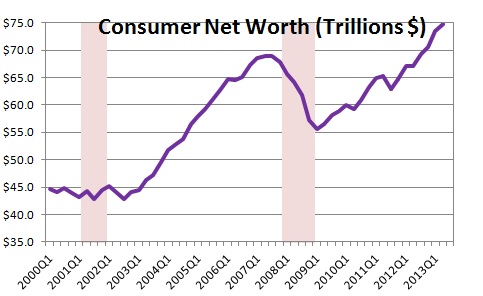
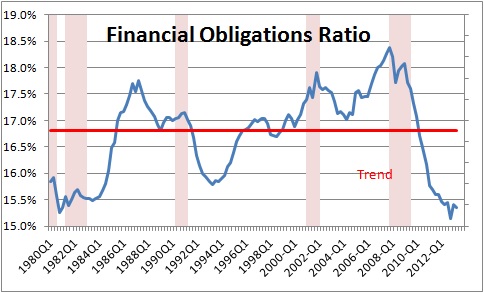
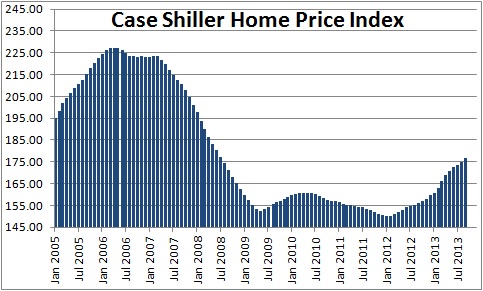
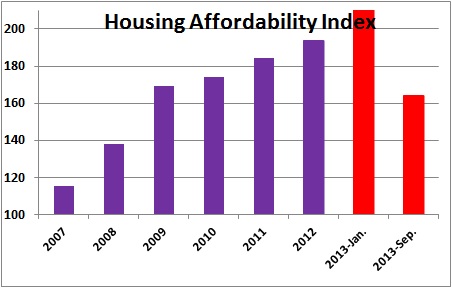
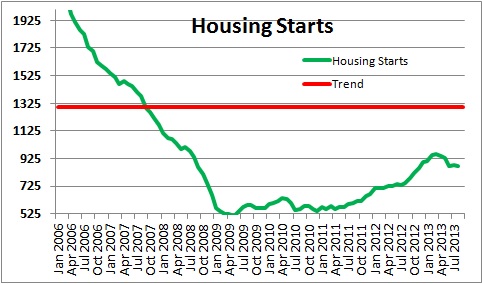

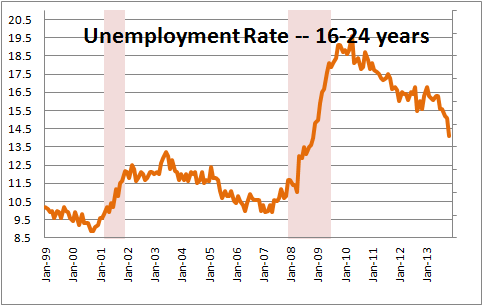
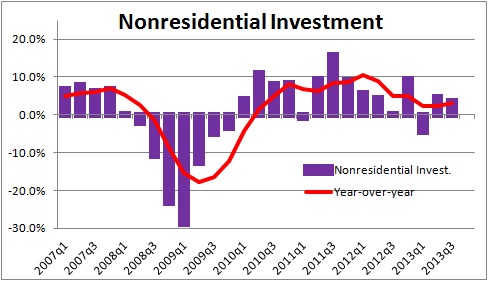
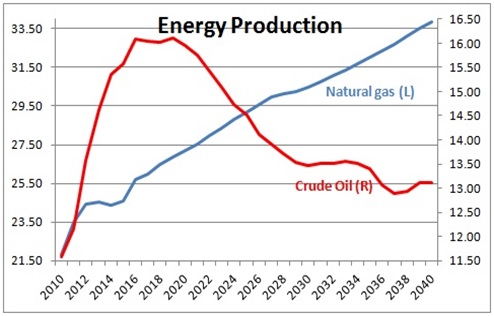
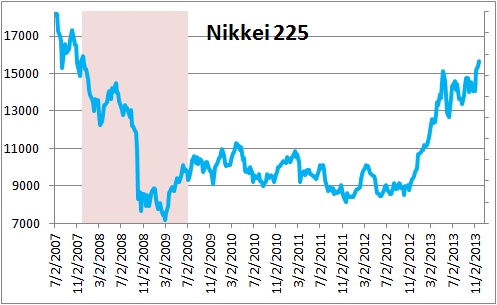
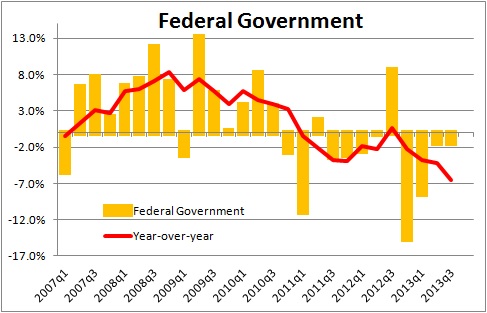
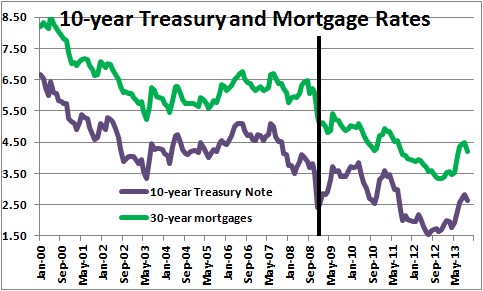
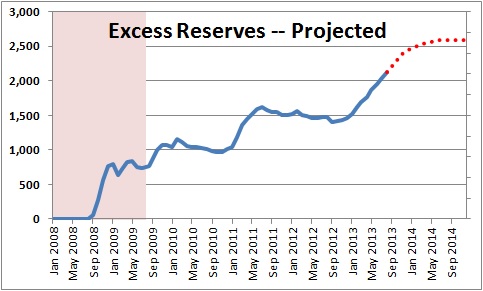
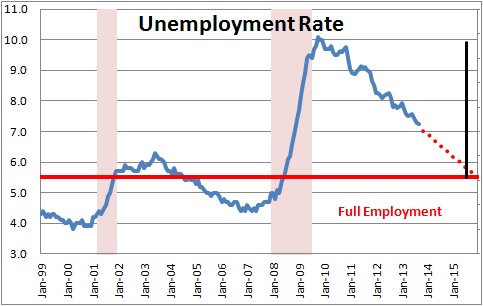
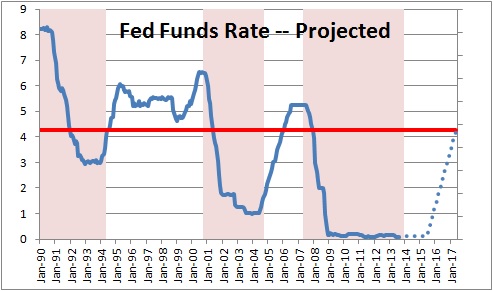
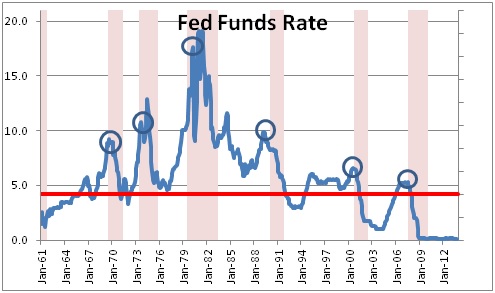
Follow Me